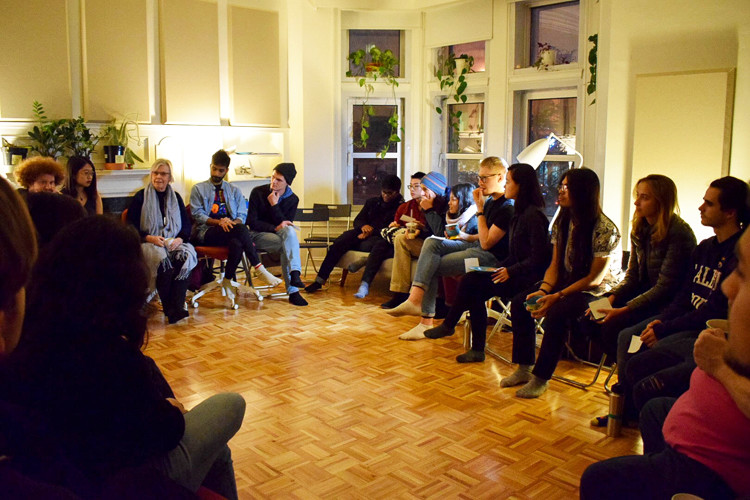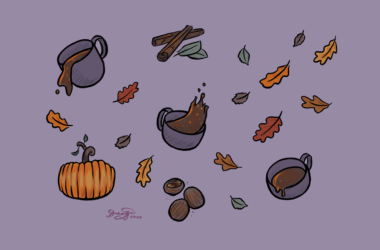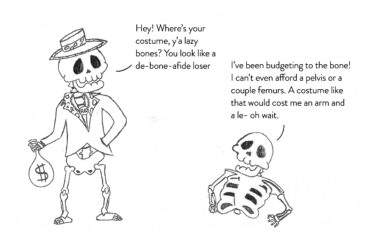“I love the brownies.” “I’m interested in learning about death.” These are the icebreakers at the November session of McGill’s Death Cafe. Though the event drew a varied crowd, commonalities developed between the full room of people intrigued by both creature comforts and talk of mortality.
On a rainy evening, participants filtered into an airy room with plants on the windowsill, past a table of pastries, berries, and fixings for tea. The contrast between conversations about death and a comfortable space with a whistling kettle and homemade baked goods is intentional, says facilitator Kit Racette.
“Death tends to separate us, and food brings us back together again,” Racette said.
The café held on Monday, Nov. 5 was the second of a series hosted at McGill’s Building 21. Death Cafe’s stated aim is to make people more aware of death to help them maximize their life. The sessions at McGill are organized by Amanda Brown and Daniel Almeida in conjunction with Racette, who has hosted many death cafés across Montreal.
The pervasiveness of the death café, though it may seem niche, has been buoyed by a strong internet presence. The death café model was developed by Jon Underwood and Sue Barsky Reid based on the ideas of Swiss sociologist Bernard Crettaz, who held informal discussions about death over food and drink at his cafés mortels. Cafés mortels had no prescribed trajectory or religious inclination, and existed merely as spaces for people to talk openly about mortality. Inspired by Crettaz’s work, Underwood started the website deathcafe.com and wrote a guide to hosting death cafés based on Crettaz’s model. Death cafés based on this model are nonprofits, have no set agendas, and always serve refreshments. In the years following the website’s launch in 2013, death cafés have grown into a worldwide phenomenon.
Racette got involved since early in the project’s development. In a conversation after the event, she explained that she was intrigued by the concept. She went on to explain how shrouding mortality in taboo makes the inevitability of death feel all the more isolating and painful. Through her own experience of loss, she realized how an awareness and acceptance of death might allow us to better value our lives.
“I went looking for a way of getting people to talk about death and dying,” Racette said.
On occasion those conversations have brought out conflict in participants’ belief systems. Racette reiterated that the death café model recommends relative neutrality in terms of religion and spirituality.
“It’ll especially go there with people that are very Christian versus [those that are] very agnostic,” Racette said. “Death café isn’t a place to convince anyone.”
The conversation at McGill’s November Death Cafe touched on a variety of topics, including what people plan to do with their bodies, what attendees would do if they had three more months to live, reincarnation, ways of achieving immortality, whether faith is a comfort, and putting the pain of losing a pet into words. We discussed the ecological impact of traditional burial and the sentimental reasons for ‘formaldehyde-ing’ bodies, a desire which, as one participant pointed out, has roots in the post-Civil War need to preserve bodies until they got home as a comfort to loved ones. A few people in attendance had worked in areas related to death and, thus, had unique perspectives from their careers in palliative care or neuroscience. By the end of the conversation, I found an answer to my own fears of aging and losing autonomy after listening to another participant’s experience of working in a World War II veterans’ hospital and seeing people who had lost many of their faculties but still found joy and things to live for.
“[Today’s café had] a lot of philosophy,” Racette said. “And I find that’s normal with younger people […] to philosophize rather than deal with practicalities of their own deaths.”
The café ended with Racette asking attendees to reflect on their time at the café. Participants described the experience as comforting and grounding. By the end, I felt that the collective initial hesitation at the topic had lifted, and that the group shared the comfort of a common understanding of their shared fate, however distant it may be.









